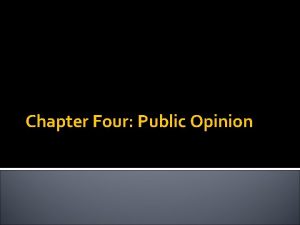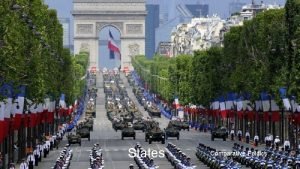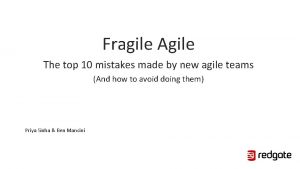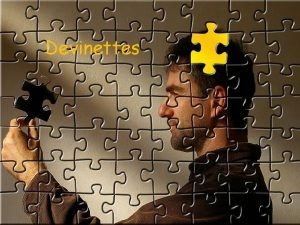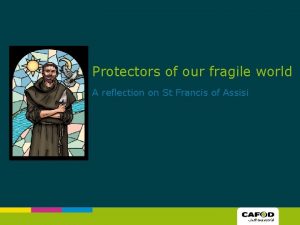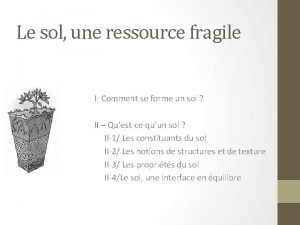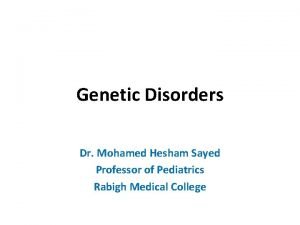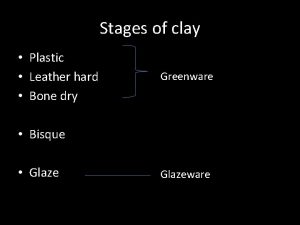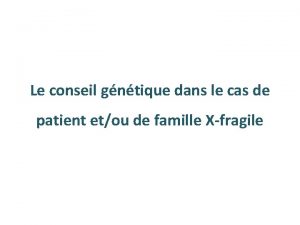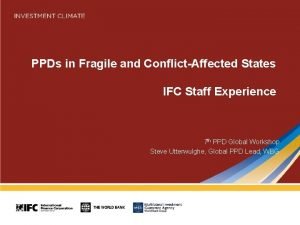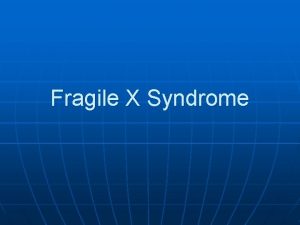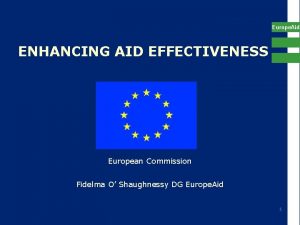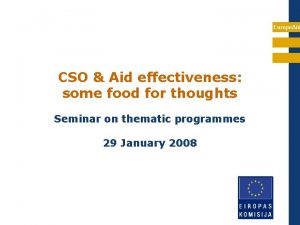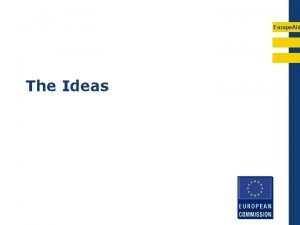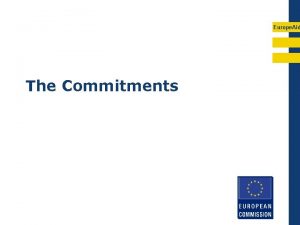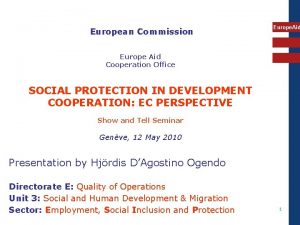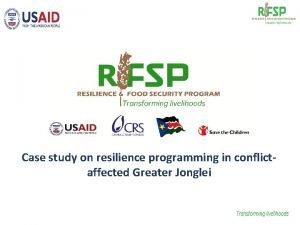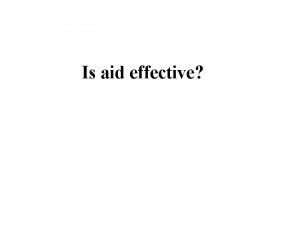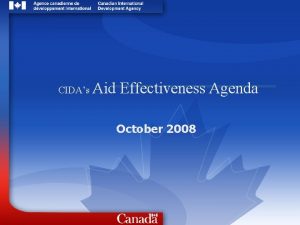Europe Aid Effectiveness in Fragile and Conflictaffected states














- Slides: 14

Europe. Aid Effectiveness in Fragile and Conflict-affected states

Structure • 1. Aid effectiveness in fragile states : what is different ? • 2. The Fragile States Principles : can’t we do better? • 3. The « New Deal » adopted in Busan Europe. Aid

1. Aid effectiveness in fragile states : what’s different? Europe. Aid • Definition of fragile states a state with weak capacity to carry out the basic state functions of governing a population and its territory and that lacks the ability or political will to develop mutually constructive and reinforcing relations with society. • What states are fragile ? o A World Bank/ADB list o An OECD list o The Commission Crisis Declaration list

1. Aid effectiveness in fragile states: what’s different? • Specific features of fragile states o o o lack of government capacity multiple priorities few implementing partners • Are the Paris Declaration principles applicable? • Challenges for aid effectiveness in FS Europe. Aid

2. The Fragile States Principles • The 10 Fragile States principles 1. Take context as the starting point 2. Ensure all activities do no harm 3. Focus on statebuilding as the central objective 4. Prioritise prevention 5. Recognise the links between political, security and development objectives 6. Promote non discrimination as a basis for inclusive and stable societies 7. Align with local priorities in different ways and in different contexts 8. Agree on practical co-ordination mechanisms between international actors 9. Act fast… but stay engaged long enough to give success a chance 10. Avoid pockets of exclusion (“aid orphans”) Europe. Aid

2. The FSP : can’t we do better? Broadly on-track Promote non-discrimination as a basis for inclusive and stable societies (6) Partly on-track Align with local priorities in different ways in different contexts (7) Partly off-track Take context as the starting point (1) Focus on statebuilding as the central objective (3) Prioritise prevention (4) Recognise the links between political, security and development objectives (5) Off-track Do no harm (2) Agree on practical co-ordination mechanisms between international actors (8) Act fast… but stay engaged long enough to give success a chance (9) Avoid pockets of exclusion (10) Partly on-track: Commitment and some progress in implementation Partly off-track: Commitment but implementation is insufficient Europe. Aid

2. The FSP : can’t we do better ? Examples Take context as Chad: Inappropriate prioritisation of humanitarian starting point assistance over development assistance Do no harm CAR: Poorly designed DDR programme Europe. Aid Focus on statebuilding Liberia: Lack of mutual understanding on the statebuilding priorities and vision Prioritise prevention Burundi: Insufficient analysis of the root causes of fragility Recognise links Togo: Limited evidence of efforts to implement whole between political, of government approach in any form security and development objectives Act fast… but stay engaged DRC: No aid commitments beyond 3 years

3. The « New Deal » : background Europe. Aid • The International Dialogue on Peacebuilding and Statebuilding o Launched at HLF-3 Accra o Brings together conflict-affected and fragile countries and international partners o 51 countries, organisations, and civil society, including: • the g 7+ group of 19 fragile states • the DAC International Network on Conflict & Fragility (INCAF)

3. The « New Deal » Europe. Aid • The New Deal, agreed at the HLF 4 and part of the Busan Outcome Document, is a new global paradigm for engagement in fragile states. • • • Peacebuilding and Statebuilding Goals (PSGs): as foundation to MDGs, to identify priorities, guide funding decisions, and monitor progress FOCUS: New terms of engagement to support country-owned and -led transitions out of fragility TRUST: Commitments to provide aid and manage resources for better results

3. The “New Deal” Peacebuilding and Statebuilding Goals (PSGs) Legitimate politics - Foster inclusive settlements and conflict resolution Security - Establish and strengthen people’s security FOCUS terms of engagement justice Economic foundations Generate employment and improve livelihoods TRUST commitments for results Fragility assessment Transparency One vision, one plan Risk sharing & risk Country compact Use the PSGs to monitor Justice -Address injustices and Support political Dialogue increase people’s access to Europe. Aid management Use & strengthen country systems Strengthen capacities Timely and predictable aid

3. The New Deal : who supports it? Europe. Aid

3. The New Deal : the way forward for the EU Europe. Aid • The EU and fragility so far : o Commission Communication of 2007 • Action Plan on fragility (not adopted) o Flexible procedures o Guidance on budget support in fragile situations o Whole of EU approaches • Action for change agenda • The way ahead • Fragility assessments/transition plans • Funding political processes • Better risk assessment and use of national systems • Fast-track procedures

3. The New Deal : Transition Compacts Europe. Aid Four main elements • A limited set of priorities • Transparent overview of funding sources and flows • Strategy for how to finance agreed priorities • Monitoring framework to facilitate accountability for results

Thank you ! Questions ? Europe. Aid
 Public opinion is both an elusive and fragile commodity.
Public opinion is both an elusive and fragile commodity. Fragile comparative and superlative
Fragile comparative and superlative Fragile to agile
Fragile to agile He clattered and clanged as he washed the dishes.
He clattered and clanged as he washed the dishes. Couché avec mes soeurs j'ai la tete rouge
Couché avec mes soeurs j'ai la tete rouge Agile is fragile
Agile is fragile Our fragile earth reflection
Our fragile earth reflection Our fragile earth reflection
Our fragile earth reflection Le sol est une ressource fragile car
Le sol est une ressource fragile car Fragile x syndrome baby
Fragile x syndrome baby Klinefelter's syndrome
Klinefelter's syndrome Stages of clay
Stages of clay X fragile
X fragile Fragile x syndrome female
Fragile x syndrome female First aid merit badge first aid kit
First aid merit badge first aid kit
